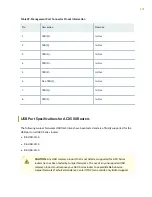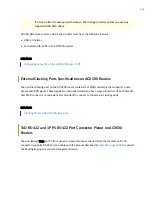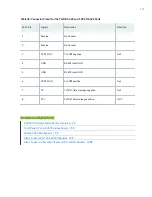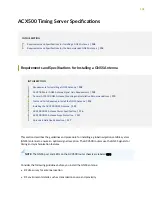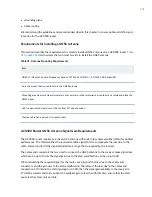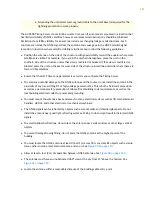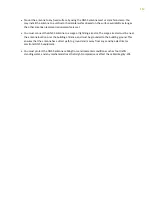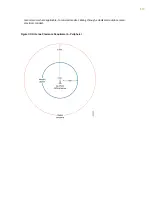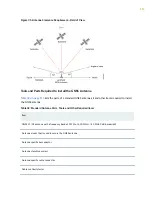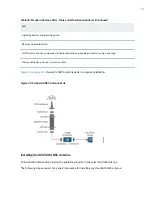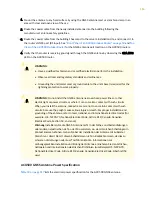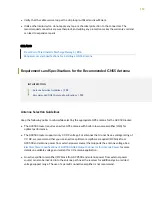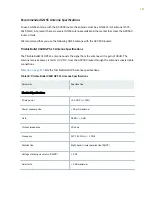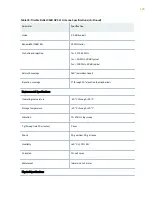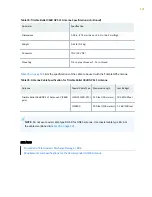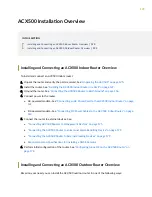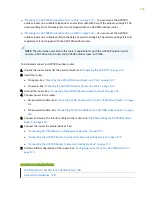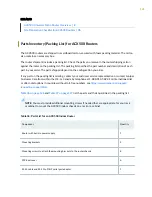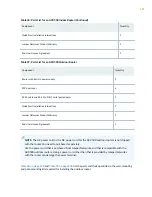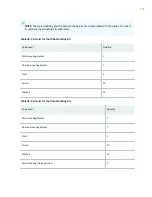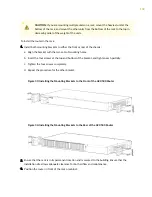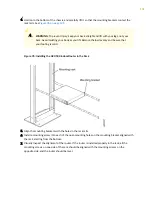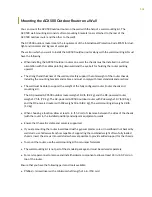
• Verify that the cable service loop or the drip loop is utilized and is sufficient.
• Unlike other radio device, do not apply any tape or chemical protection to the connectors. The
recommended connectors are weatherproof, and adding any protection makes the warranty void and
can lead to expensive repairs.
SEE ALSO
Prevention of Electrostatic Discharge Damage | 236
Requirements and Specifications for Installing a GNSS Antenna
Requirements and Specifications for the Recommended GNSS Antenna
IN THIS SECTION
Antenna Selection Guidelines | 118
Recommended GNSS Antenna Specifications | 119
Antenna Selection Guidelines
Keep the following points in mind while selecting the appropriate GPS antenna for the ACX500 router:
• The ACX500 router requires an active GPS antenna with built-in low-noise amplifier (LNA) for
optimal performance.
• The ACX500 router supports only 3 V DC voltage. For antennas that do not have a voltage rating of
3 V DC, we recommend that you use an active splitter or amplifier as required (DC block from
ACX500 and antenna power from external power source) that supports the antenna voltage. See
Electrical Power Specifications of ACX500 GNSS Output Connector for Antenna Power
for more
details on available voltage and current for 3 V antenna application.
• An active splitter or amplifier (DC block from ACX500 and antenna power from external power
source) can also be inserted into the antenna path near the receiver for additional gain or added
voltage support range. The use of a parasitic nonactive amplifier is not recommend.
118


